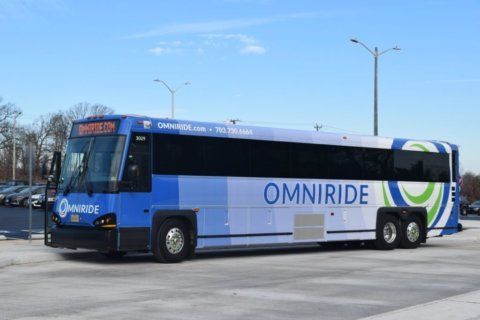This article was republished with permission from WTOP’s news partner InsideNoVa.com. Sign up for InsideNoVa.com’s free email subscription today.
This article was written by WTOP’s news partner InsideNoVa.com and republished with permission. Sign up for InsideNoVa.com’s free email subscription today.
Prince William County remains the second-largest locality in Virginia and one of the fastest-growing counties in the region, and its status as a majority-minority community was affirmed by the first release of data from the 2020 Census.
The new data will be used to redraw the county’s board of supervisors districts, although it’s not yet entirely clear what effects the population growth will have. The county currently has seven magisterial districts and is considering adding an eighth. Virginia’s legislative and congressional districts are also being redrawn by a redistricting commission approved by voters last year.
The data also show that over 542,000 people now live in Prince William and the cities of Manasas and Manassas Park combined, an increase of 19.4% from 2010.
Overall, Virginia’s population grew by 7.9%, according to a Virginia Public Access Project analysis of data released Aug. 12. Northern Virginia’s population rose by 14.3% as the region continues to outpace the state, but growth is slowing compared to the booms of the 1990s and 2000s.
Bob Lazaro, executive director of the Northern Virginia Regional Commission, said 62% of the region’s growth was in the outer regions, down slightly from 65% in the 2010 Census.
Fairfax County remains the most populous locality in Virginia with more than 1.15 million people, roughly 13% of Virginia’s 8.6 million residents. The county saw a growth of about 68,000 people, or 6.3%, from the 2010 Census.
Prince William remained the second-most populous locality in the state with 482,200 residents, up more than 80,000 people, or 20%, since 2010. Prince William leads Virginia Beach by about 23,000 people. Loudoun County had the most growth in the region over the past decade, adding 108,000 people for 420,900 residents, a 34% increase.
Although Prince Wiliam’s numbers continued to rise, on a percentage basis the county’s growth was the slowest in decades. Over the past 40 years, the biggest boost was during the 1980 Census with a 52% increase. The 2010 Census showed a 43% population increase.
Although the numbers serve as official population counts, some statisticians are concerned with the accuracy of the data for small towns and neighborhoods because the Census Bureau revamped the way it calculated data for small areas to protect privacy.
“For smaller areas, the data is now not as reliable as it had been in the past,” said Jill Kaneff, senior demographer for the Northern Virginia Regional Commission. “That’s going to have a significant impact on researchers and analysts.”
Area remains majority-minority
Prince William remained a majority-minority locality and was joined by Manassas and Manassas Park. Lazaro said five of the nine Northern Virginia localities are now majority-minority communities.
“Northern Virginia is a very diverse region and the census just reflects that reality,” he said.
About 41% of Prince William’s residents identified as white. About 20% of people were Black, 14% were other, 13% were multiracial and 10% were Asian.
Hispanics and Latinos made up 25% of the population. Because the Census defines Hispanic and Latino as an ethnicity rather than race, those residents could identify as Hispanic and another race. For example, if someone said they identified as Black and Hispanic, they would be identified in the overall population as Black.
Just over 50% of Northern Virginia’s residents identify as white, according to the VPAP analysis, with 16.2% Asian, 11.7% Black, 11.4% multiracial and 10.2% other. The census reported that 18.6% of the region’s residents are of Hispanic or Latino ethnicity.
VPAP’s analysis includes Fauquier County. The western boundaries of Northern Virginia Planning District, which is created at the state level, are Loudoun and Prince William counties.
Jill Kaneff, senior demographer for the Northern Virginia Regional Commission, said that minorities make up nearly 53% of the area’s population.
Manassas and Manassas Park, which were more than 60% white at the last Census, are now majority-minority communities.
In Manassas, 39% of people identified as white, 29% were other, 13% were multiracial, about 12% were Black and 10% were Asian. About 43% of Manassas residents identified as Hispanic.
Manassas Park had 32% of residents identify as white. About 32% were other, 30% were multiracial, about 12% were Black and about 11% were Asian. About 45% of people were Hispanic.
Dumfries and Quantico were majority-minority communities and had the highest percentage of residents identifying as Black at about 27% and 29%, respectively. Occoquan and Haymarket are majority white at 66% and 62%, respectively.
Political ramifications
The population growth could impact political power dynamics, but it’s too early to know to what extent.
The county will use the numbers in concert with a Sterling consulting firm for its redistricting process. The firm will provide options for redrawing lines of the seven existing districts as well as adding an eighth magisterial district.
Democrats hold a 5-3 majority on the Board of Supervisors, with Republicans holding the western Brentsville and Gainesville districts and the central Coles district. Democrats hold the at-large chair seat, the eastern Woodbridge, Neabsco and Occoquan districts and the central-eastern Potomac seat.
Most of the county’s population remains on the eastern side, although western magisterial districts saw a higher percentage growth.
The Woodbridge District saw the highest percentage growth at about 28%, or 15,602 residents. The Brentsville District, however, had the most overall residents added at 15,682, or 26%.
“It just illustrates that growth happened on both sides of the county,” said county demographer Brian Engelmann. “It’s demonstrating that growth was occurring all around.”
The Occoquan and Neabsco districts saw significantly less population growth than the other five districts at 6,760 and 6,400, respectively.
The primarily western districts of Brentsville and Gainesville together added 26,200 residents, about 22% growth. The easternmost districts of Woodbridge, Occoquan and Neabsco grew 28,700 residents, or 17%.
The county’s more central districts of Coles and Potomac grew about 25,000 people, or around 22%.
Engelmann attributed growth in the Woodbridge and Potomac districts to new multifamily units and the Potomac Shores development.
Hispanic and Latino populations grew by more than 7,000 in the Coles, Neabsco and Woodbridge districts. Engelmann said the county saw the first decrease in its white population, which fell by more than 10,000 people.
Engelmann said one interesting statistic is that only 30% of county residents under 18 are white, compared to 41% of residents over 18, showing that the younger generation is more diverse.
Earlier this year, county staff estimated that the Neabsco and Occoquan districts would see the smallest population growth, and the others would grow about 11,000 to 12,000 each.
Engelmann said a big difference for redistricting with this Census compared with 2010 is a much smaller variance in numbers between districts. Last time, populations varied from around 40,000 in Occoquan to more than 80,000 in Brentsville.
“We’re dealing with much less drastic change than before,” he said.
Engelmann said if the county stays with seven districts, the boundaries won’t change dramatically. The possibility of an eighth district is more complicated, and Engelmann said it’s too early to determine where it would be.
The state is using a bipartisan redistricting commission to redraw boundaries of congressional and General Assembly districts. The commission held its first meeting Monday since the data was released. According to its website, the commission must submit its maps to the General Assembly within 45 days of receiving the Census data.
Any changes to local election districts remain in the hands of local governments.







